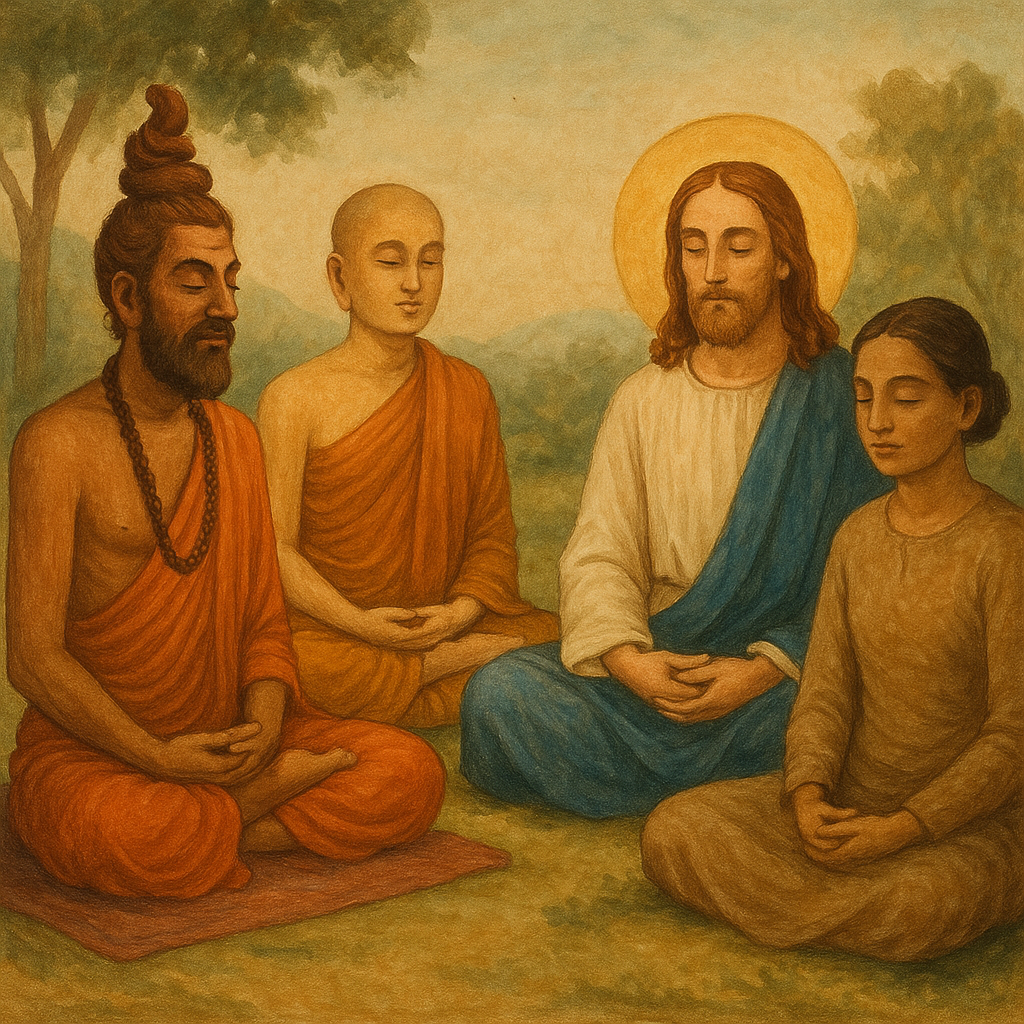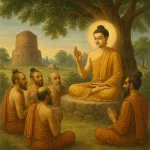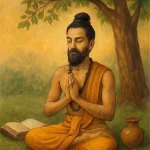Meditation Traditions Everywhere: Hindu, Buddhist, and Christian Mindfulness in India
India has long been called the spiritual heartbeat of the world — a land where silence speaks and stillness heals. Meditation, in its many forms, is one of India’s oldest gifts to humanity. What’s remarkable is how this practice transcends all boundaries — religious, cultural, and even modern scientific ones. In India today, meditation is no longer limited to monks or yogis. It is being embraced by Hindus, Buddhists, Christians, and even secular seekers, each interpreting it in their own unique way.
The Hindu Path: Meditation as Union with the Divine
In the Hindu tradition, meditation — known as dhyana — is one of the oldest spiritual practices. The word itself appears in the Upanishads, where it is described as the inward journey of the mind towards the Self. For Hindus, meditation is not merely relaxation; it is a sacred process of connecting the atma (soul) with paramatma (the Supreme). Ancient sages taught that through meditation, the restless mind becomes steady, allowing a person to experience inner peace and clarity. Different paths of yoga emphasize this in various ways: Raja Yoga through concentration and discipline, Bhakti Yoga through devotion, and Jnana Yoga through contemplation on truth.
Today, Hindu meditation practices such as mantra repetition, Om chanting, and guided visualization are widely followed. Many temples and ashrams across India conduct daily meditation sessions, often blending tradition with modern wellness techniques. For countless Hindus, meditation remains both a prayer and a practice — a way to quiet the senses and feel the divine presence within.
The Buddhist Way: Mindfulness and Compassion
If Hinduism gave birth to meditation, Buddhism gave it structure and universality. When Prince Siddhartha became the Buddha, he taught meditation as the direct path to freedom from suffering. His approach was simple yet profound — to observe one’s breath, sensations, and thoughts without attachment.
In Buddhist meditation, the aim is awareness — sati or mindfulness. By observing the mind patiently, one begins to understand the roots of craving, anger, and ignorance. Gradually, this awareness leads to compassion and inner liberation. Across India, Buddhist monasteries in places like Bodh Gaya, Sarnath, and Dharamshala continue to teach techniques such as Vipassana (insight meditation) and Metta Bhavana (loving-kindness meditation). These practices attract not only monks but also students, travelers, and working professionals who seek calm in the chaos of modern life. The beauty of Buddhist mindfulness lies in its simplicity — it asks for nothing but attention. To be aware of a single breath, a step, or a thought is, in essence, to meditate. In this way, Buddhism offers a bridge between spirituality and psychology, showing that awareness itself is the key to peace.
Christian Mindfulness: The Silent Prayer of the Heart
Though often less spoken about, Christian meditation has deep roots in India as well, especially among contemplative communities and monasteries. In Christianity, meditation is seen as a form of communion with God — a silent prayer where one listens more than speaks. The Christian contemplative tradition emphasizes inner stillness, humility, and surrender. Many Christians in India practice what is known as centering prayer — repeating a sacred word or phrase while resting quietly in the presence of God. This mirrors the mantra-based focus seen in Eastern practices but is directed toward Christ and divine love.
In cities and retreat centers across India, Christian meditation groups gather weekly to practice silence together. For them, meditation is not separate from worship; it is a deeper expression of it. Whether one is reading a Psalm slowly, focusing on a verse, or simply breathing with faith, the aim remains the same — to be present with God in stillness.
The Shared Spirit: One Silence, Many Paths
Although Hindu, Buddhist, and Christian traditions may use different symbols, languages, and philosophies, the essence of their meditation is strikingly similar. All speak of inner quiet, detachment from worldly noise, and connection with something greater than oneself.
In each path, meditation serves as a mirror that reflects the truth within. It teaches patience, compassion, and surrender — qualities that dissolve divisions between religions. When a Hindu chants “Om,” a Buddhist observes the breath, or a Christian sits in silent prayer, they are all entering the same sacred space of awareness. India’s spiritual landscape allows these traditions to coexist harmoniously. Temples, monasteries, and churches often stand side by side, each offering its own doorway into stillness. This diversity is not competition; it is complementarity. It reminds us that truth can be approached through many forms, but silence remains the universal teacher.
Meditation in Modern India
In today’s fast-paced India, meditation has moved beyond religion into daily life. Offices hold mindfulness sessions, schools teach breathing techniques, and wellness apps guide millions. Yet behind every modern method lies the same ancient wisdom: peace begins within.
Whether one follows Hindu dhyana, Buddhist mindfulness, or Christian contemplation, the essence of meditation is timeless. It is not bound by belief but guided by experience. In the stillness of meditation, all paths converge — the soul, regardless of faith, finds its way home.
~Religion World Bureau









